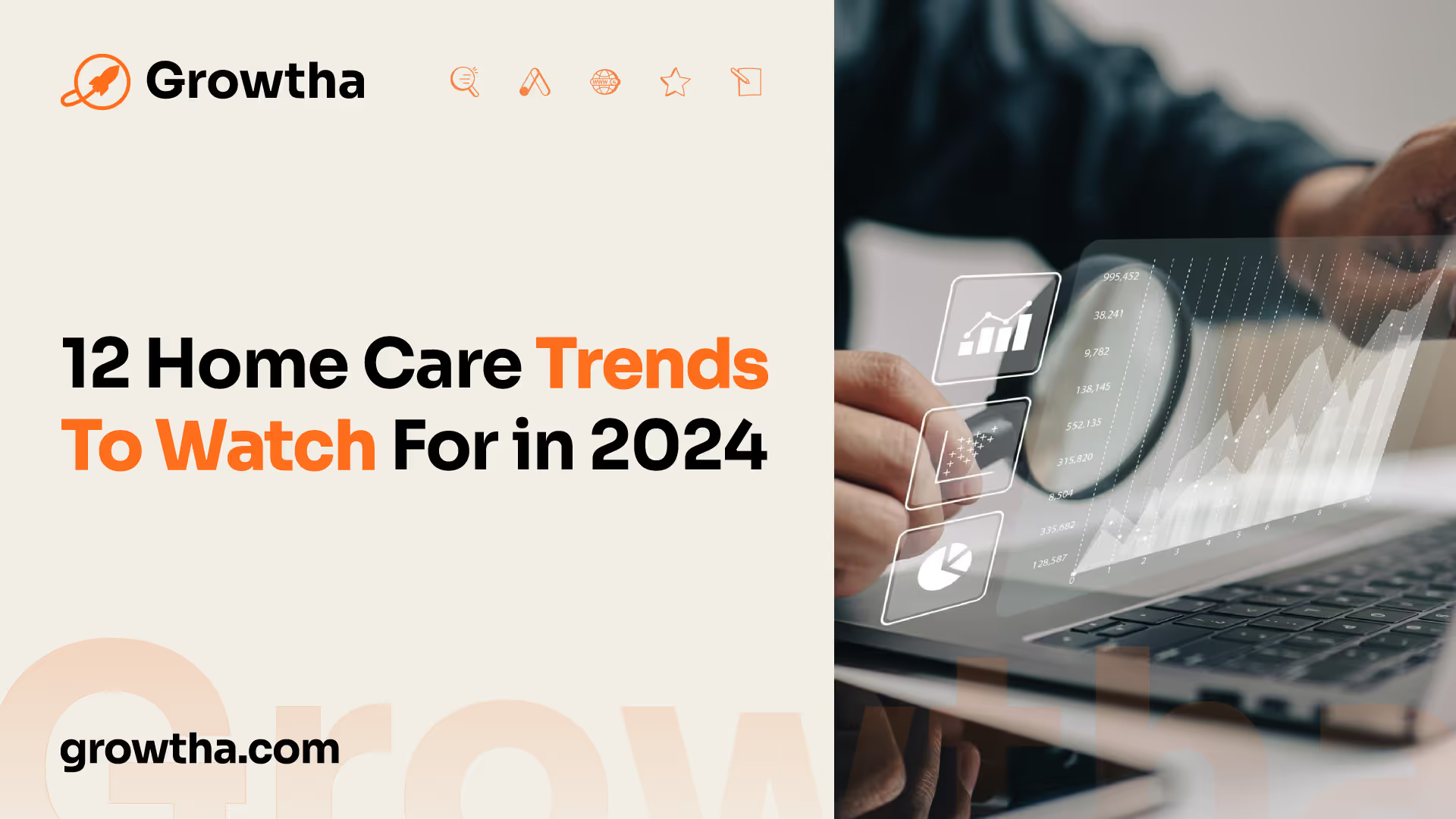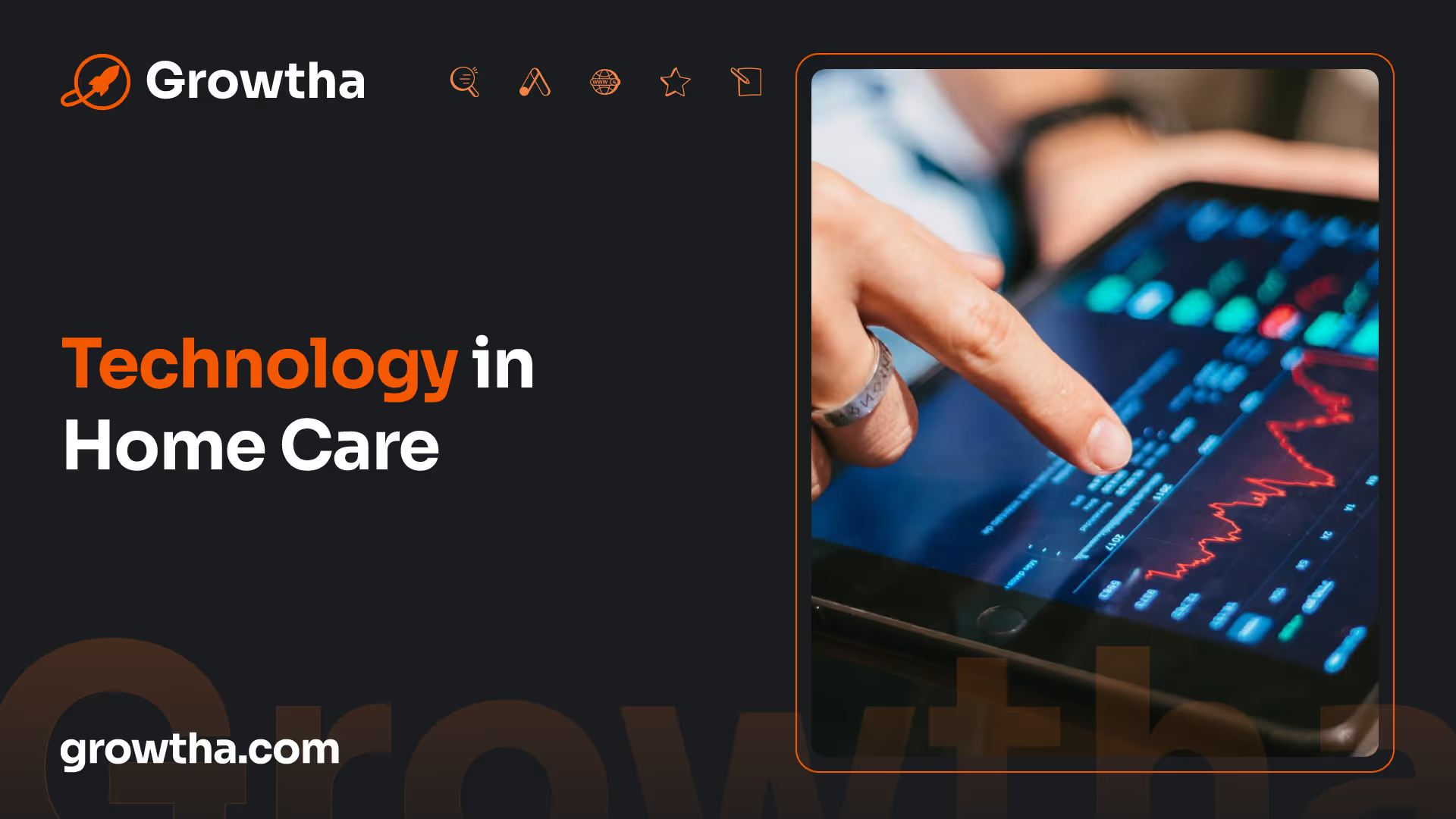12 Home Care Trends To Watch For in 2024
Two significant trends to watch for in 2024 are the National Patient Safety Goals (NPSGs) and the impact of emerging market economies.


12 Home Care Trends To Watch For in 2024
Emerging Home Care Trends
As we look ahead to 2024, several emerging trends are shaping the landscape of home care. These trends reflect the evolving needs of patients, advancements in technology, and changes in the healthcare industry. Two significant trends to watch for in 2024 are the National Patient Safety Goals (NPSGs) and the impact of emerging market economies.
National Patient Safety Goals for 2024
The National Patient Safety Goals (NPSGs) for the Home Care program, effective from January 1, 2024, are set to drive improvements in patient safety and quality of care. These goals outline specific areas of focus for home care providers, ensuring the implementation of best practices and the delivery of safe, effective, and patient-centered care.
By adhering to the NPSGs, home care agencies can enhance medication safety, prevent falls, reduce the risk of infection, and improve communication between healthcare providers and patients. These goals aim to optimize the overall quality and safety of care provided to individuals receiving care in their homes.
Impact of Emerging Market Economies
The year 2024 will witness continued evolution in the economics of home care, with significant implications for both caregivers and clients. One major aspect of this trend is the rising wages for caregivers, which can lead to increased costs for clients [2]. This increase in wages reflects the growing recognition of the invaluable role that caregivers play in delivering high-quality home care services.
Additionally, the introduction of the Health Care Fairness for All Act is anticipated to have positive implications for the health and home care industries. This act allows individuals to save and pay for healthcare, including home care services, using tax-advantaged methods such as Health Savings Accounts. This financial flexibility can make home care services more accessible to a wider range of individuals, promoting better health outcomes and supporting the growth of the home care industry.
As emerging market economies continue to shape the home care landscape, it is imperative for providers to adapt and find innovative strategies to deliver efficient and cost-effective care without compromising quality.
The emerging trends of NPSGs and the impact of emerging market economies in home care highlight the ongoing commitment to patient safety, quality care, and the recognition of the value of home care services. By staying informed and embracing these trends, home care providers can continue to evolve and meet the needs of patients in 2024 and beyond.

Technology in Home Care
As technology continues to advance, it has a significant impact on the field of home care, enhancing both efficiency and the quality of care provided. Two key trends to watch for in 2024 are remote monitoring and real-time tracking, as well as the integration of virtual reality in nursing education.
Remote Monitoring and Real-time Tracking
Remote monitoring devices have revolutionized home care by allowing for real-time health tracking, even from a distance. Through the use of these devices, medical professionals can closely monitor vital signs and promptly intervene when necessary, reducing the need for unnecessary hospital visits or readmissions [3].
By utilizing remote monitoring systems, healthcare providers can ensure timely interventions and provide personalized care, all while patients remain in the comfort of their own homes. This technology enables continuous monitoring of key health indicators, such as blood pressure, heart rate, and blood glucose levels, allowing for early detection of any abnormalities or changes in health status.
Virtual Reality in Nursing Education
The incorporation of virtual reality (VR) in nursing education has transformed the way nurses are trained and prepared for their practice. VR offers immersive experiences that simulate real-life scenarios, providing nurses with the opportunity to practice critical thinking and decision-making skills in a safe and controlled environment.
Through virtual reality simulations, nursing students can gain hands-on experience and exposure to various patient care scenarios. This technology allows them to develop their clinical skills, enhance their ability to handle complex situations, and improve their overall confidence before entering the field. By bridging the gap between theory and practice, virtual reality in nursing education ensures that nurses are well-prepared to provide high-quality care to patients in home care settings.
The integration of cutting-edge technology, such as remote monitoring and virtual reality, into home care has the potential to elevate the quality of care, facilitate seamless communication, and provide valuable insights into patient health. These advancements not only enhance the delivery of care but also contribute to improved patient outcomes and increased patient satisfaction. As technology continues to evolve, its role in home care will undoubtedly continue to expand, shaping the future of healthcare delivery in the comfort of patients' homes.

Healthcare Regulations and Compliance
In the ever-evolving landscape of home care, healthcare regulations and compliance play a vital role in ensuring quality care and patient safety. In 2024, two significant aspects to watch for in this domain are the Health Care Fairness for All Act and the balancing of home care regulations.
Health Care Fairness for All Act
The introduction of the Health Care Fairness for All Act is anticipated to have significant positive implications for the health and home care industries. This act aims to provide individuals with tax-advantaged methods, such as Health Savings Accounts, to save and pay for healthcare, including home care services. By offering tax advantages, this act seeks to make healthcare more affordable and accessible to a broader population.
Balancing Home Care Regulations
Balancing the need for appropriate home care regulations while preventing overregulation is a crucial aspect to consider in 2024. Striking the right balance is essential to create a trusting relationship with regulators and maintain the best quality of care and access for clients. It is important to ensure fair and achievable licensing standards nationwide to prevent burdensome regulations that may hinder the provision of home care services.
Achieving a harmonious regulatory environment requires collaboration between policymakers, home care providers, and industry stakeholders. By developing regulations that prioritize patient safety and quality of care while avoiding unnecessary bureaucracy, the home care industry can continue to flourish and meet the evolving needs of clients.
In Philadelphia, a diverse home care industry caters to various needs, including elder care and specialized medical services. The rising demand for home care services presents both opportunities and challenges for the industry. Resource allocation, coordination, and accessibility have been identified as challenges, highlighting the need for innovative solutions and improvements in the delivery of home care services.
Technology is playing a crucial role in transforming the home care landscape in Philadelphia and beyond. Streamlining processes, enhancing communication, and improving the quality of care delivered are some of the ways technology is positively impacting the industry. As the home care industry continues to evolve, regulations and compliance will remain crucial to ensure the highest standards of care and maintain the trust of patients and their families.
Advancements in Home Care Technology
As technology continues to advance, it is making a significant impact on home care, enhancing the efficiency and quality of care provided. Two noteworthy advancements in home care technology that are expected to flourish in 2024 are artificial intelligence in home health tech and telemedicine and virtual psychology.
Artificial Intelligence in Home Health Tech
The integration of artificial intelligence (AI) in home health tech is revolutionizing the way care is delivered. AI-powered software streamlines administrative tasks, freeing up healthcare workers to focus on direct patient care. Predictive analytics and machine learning algorithms can detect potential health issues early on, allowing for timely intervention and suggesting personalized care plans. This proactive approach not only improves patient outcomes but also reduces hospital stays and enhances patient satisfaction, ultimately promoting agency growth.
By harnessing the power of AI, home health tech can provide invaluable insights into patient health, enabling healthcare professionals to make informed decisions. The ability to analyze vast amounts of health data allows for early identification of health trends, facilitating preventive measures and personalized interventions. Additionally, AI-powered devices can assist with medication management, reminding patients to take their medications on time and ensuring adherence to prescribed regimens.
Telemedicine and Virtual Psychology
The rise in mental health issues has increased the demand for accessible mental health services in home health care. Telemedicine and virtual psychology are emerging as vital components of home care, providing patients with the opportunity to receive therapy and counseling from the comfort of their own homes. These virtual solutions offer numerous benefits, including reduced exposure to infections, increased patient satisfaction, and improved access to mental health resources. By eliminating the need for in-person visits, telemedicine and virtual psychology help prevent hospital admissions and improve overall patient outcomes.
Through telemedicine, healthcare professionals can conduct virtual consultations, monitor patients remotely, and provide ongoing support. This approach not only saves time and resources but also ensures that patients receive the care they need, even in remote or underserved areas. Virtual psychology sessions enable individuals to access therapy sessions conveniently, breaking down barriers such as transportation or mobility challenges.
As these technologies continue to advance, it is crucial to ensure data security and privacy protection. Safeguarding sensitive information becomes increasingly important as more healthcare data is digitized within these systems. Bridging the gaps in access to technology among different populations is also pivotal for achieving equitable healthcare outcomes for all. By integrating these cutting-edge solutions into home care routines, the quality of care can be elevated, seamless communication fostered, and valuable insights into patient health can be gained.
The advancements in home care technology, such as artificial intelligence and telemedicine/virtual psychology, are transforming the way care is delivered in the comfort of patients' homes. These innovations have the potential to improve patient outcomes, increase efficiency, and enhance the overall quality of home care services.
Workforce Challenges in Home Care
The home care industry faces several workforce-related challenges that are expected to persist and shape the landscape in 2024. Two key areas of concern are staffing shortages and wage growth, along with the implications of the proposed federal staffing mandate.
Staffing Shortages and Wage Growth
Staffing shortages continue to be a prevalent issue in the home care industry. The demand for home care services is increasing, driven by factors such as an aging population and the desire for specialized medical care. However, finding and retaining qualified healthcare professionals remains a significant challenge.
The shortage of skilled workers can lead to increased workloads for existing staff, potential burnout, and compromised quality of care. It also hinders the ability of home care agencies to meet the growing demand for services. To address this challenge, industry stakeholders are focusing on strategies to attract and retain a competent workforce. This includes offering competitive wages, providing opportunities for career advancement, and improving the overall work experience [6].
Wage growth is another critical factor influencing the home care workforce. As the demand for home care services rises, there is a need to ensure that healthcare professionals are adequately compensated for their work. Competitive wages not only attract skilled workers but also contribute to job satisfaction and employee retention. Home care agencies are increasingly recognizing the importance of offering competitive compensation packages to attract and retain qualified staff.
Federal Staffing Mandate Implications
The proposed federal staffing mandate for nursing homes is expected to be a significant challenge for the senior living and care industry, including home care. If implemented, nursing homes and skilled nursing facilities (SNFs) would be required to maintain specific staffing levels. According to predictions, the SNF industry would need to hire approximately 102,000 additional full-time equivalents at an estimated annual cost of $6.8 billion.
The federal staffing mandate poses financial implications for home care agencies, as they would need to allocate additional resources to meet the required staffing levels. The challenge lies in striking a balance between providing quality care and managing the associated costs. Home care agencies will need to carefully navigate these implications to ensure compliance with regulations while maintaining operational viability.
Addressing workforce challenges in home care requires a multi-pronged approach that encompasses competitive wages, improved recruitment strategies, and comprehensive workforce development initiatives. By focusing on these areas, the home care industry can strive to overcome staffing shortages, support its workforce, and continue delivering high-quality care to those in need.
Future of Senior Living and Care
As we look ahead to the future of senior living and care, there are several trends and factors that will shape the industry in 2024 and beyond. Two key areas of focus are population aging trends and margins and mergers in the senior care industry.
Population Aging Trends
The aging population is a significant driver of the demand for senior care. According to projections, the population aged 85 and older is expected to more than double from 6.7 million in 2020 to 14.4 million by 2040, and 18.6 million by 2050. This growth in the older population highlights the transformative need for future senior care and wellness [6].
It's important to note that the demand for senior care is not solely driven by acuity. Many seniors are actively pursuing physical, mental, and social wellness. As a result, senior living and care providers are adapting their offerings to meet these evolving needs and preferences.
Margins and Mergers in the Senior Care Industry
In 2024, senior living and care operators are focusing on enhancing margins. This involves finding the right balance between right-sizing rates and boosting census across portfolios. The industry is working to strengthen bottom lines by driving top-line volume, optimizing rates, and recalibrating operating costs. Additionally, strategic redesign options are being explored to improve margins and overall financial performance [6].
Despite a decline in senior living and care transactions in 2023, there is optimism for a rebound in merger and acquisition (M&A) activity in 2024. The industry is adapting to the evolving economic landscape by focusing on regional density, strategic capital reallocation, resident-centric models, technological integration, and holistic wellness. These approaches aim to enhance the overall quality of care and services provided to seniors while also driving operational efficiencies and financial sustainability [6].
By keeping a close eye on population aging trends and exploring strategies to optimize margins and navigate mergers, the senior care industry is proactively responding to the evolving needs and demands of the aging population. These trends will shape the future landscape of senior living and care, ensuring that seniors receive the quality care and support they deserve.
References
[2]: https://www.familynursingcare.com/top-5-home-care-trends-of-2024/
[3]: https://caryfy.ai/expert-insight/the-impact-of-technology-on-home-care-an-in-depth-analysis/
[4]: https://homeconceptservices.com/philly-in-the-digital-age-how-technology-enhances-local-home-care/
[5]: https://www.alorahealth.com/top-five-home-health-trends-to-watch-in-2024/
[6]: https://www.claconnect.com/en/resources/articles/24/top-5-trends-shaping-the-senior-living-and-care-industry-in-2024







